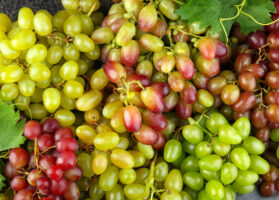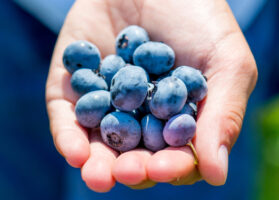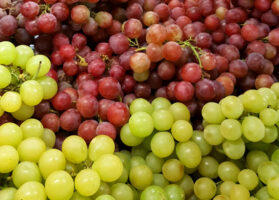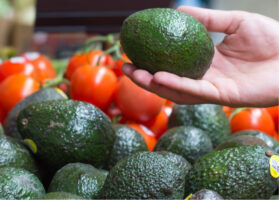Agronometrics in Charts: Unfavorable weather deals a heavy blow on Blackberry volumes out of Georgia and North Carolina
In this installment of the ‘Agronometrics In Charts’ series, Sarah Ilyas studies the state of the blackberry season in the US. Each week the series looks at a different horticultural commodity, focusing on a specific origin or topic visualizing the market factors that are driving change.
The Blackberry Industry is an integral part of North Carolina’s Economy. There are approximately 1000 acres in NC where blackberries are being grown. The hot humid summers of NC provide the most optimal conditions for blackberries to grow. In Central and Western NC, blackberries are grown in open fields, while in Eastern NC they are grown in tunnels. Major commercial blackberry varieties for the U.S. fresh market include Apache, Chester, Natchez, Navaho, Osage, Ouachita, Prime-Ark 45, and Triple Crown, but there are many other proprietary varieties, like Ponca, an early season berry from the University of Arkansas.
Tupy is the most common variety grown in Mexico for winter export, while Marion and Columbia Star are common in the Pacific Northwest.
Despite the forecasts for a bountiful blackberry season, supplies out of Georgia and North Carolina have been short owing to unfavorable weather conditions. “I think last year we had better supplies of blackberries but not much better. This time of year is always a little tough for blackberry supplies,” says Robert Wilhelm of Bova Fresh LLC in Boca Raton, Florida. Wilhelm says Bova Fresh currently has fruit coming from several regions including Guatemala, Georgia, North Carolina and California. “There is not much competition right now as all regions seem to be short,” he adds.

Source: USDA Market News via Agronometrics.
(Agronometrics users can view this chart with live updates here)

Source: USDA Market News via Agronometrics.
(Agronometrics users can view this chart with live updates here)
Pricing this season is similar to last season. In Week 29, blackberries from North Carolina were priced at $14.6 per package while week 28 saw blackberries from Georgia being priced at $13 per package. Although demand has not grown considerably this season, Wilhelm thinks that promotions do make an impact. “Every year I see more and more blackberry sales on our books and we continue to grow the category each year,” he adds.
Altogether this means that “There really has been no change in pricing since the domestic deal started. We have been selling mostly in the mid-teens,” he says. Wilhelm says he expects supplies to fall off with even more rain coming and in turn, expects some Florida and Georgia growers to close up for the season due to that pricing.

Source: USDA Market News via Agronometrics.
(Agronometrics users can view this chart with live updates here)
The 19th North Carolina Blackberry Festival was held on July 15-16 in Downtown Lenoir and was hosted by the Caldwell Chamber of Commerce. The 2-day festival brings in upwards of 25,000 people from all over the state and is one of North Carolina’s premiere street festivals.

Source: USDA Market News via Agronometrics.
(Agronometrics users can view this chart with live updates here)
All pricing for domestic US produce represents the spot market at Shipping Point (i.e. packing house/climate controlled warehouse, etc.). For imported fruit, the pricing data represents the spot market at Port of Entry.
Written by: Sarah Ilyas






